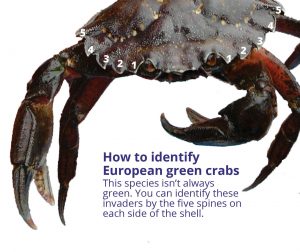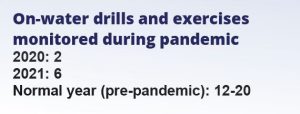A new Council report tells the story of how Cordovans, the oil industry, and government agencies came together in the late 1990s to protect the ecologically rich Copper River Delta and Flats from the effects of a spill.
Accepted Reports
After 25 years of work on invasive species, Council studies remain innovative

Twenty-five years ago this year, the Council released its first study on the threat of marine invasive species to Prince William Sound. The researchers determined that the biggest source of risk was the ballast water discharged from the oil tankers arriving in Prince William Sound.
Drills and exercises affected by pandemic again in 2021
The Council has released its annual report on drills and exercises conducted in Prince William Sound in 2021. This report highlights the continuing effects of the COVID-19 pandemic and lessons learned.
Reduced on-water monitoring for second year
 For the second year in a row, the Council has been unable to monitor the on-water drills and exercises in Prince William Sound as closely as pre-pandemic years.
For the second year in a row, the Council has been unable to monitor the on-water drills and exercises in Prince William Sound as closely as pre-pandemic years.
The Council has not been allowed on tugs or barges since early 2020, given COVID safety precautions. To be able to monitor some drills, the Council has chartered boats to observe from afar, but evaluation has proved difficult from such a distance.
“We can’t see the full evolution of the exercise or hear communications,” says Council drill monitor Roy Robertson. “We can’t tell if the crews are having problems deploying boom and we can’t time the activities like we usually do.”
Prince William Sound is home to a variety of bird species in winter
Frigid Alaska winters can be a tough time and place for wildlife. Food is scarce, the climate can be extreme, and days are short. Many species of birds head south.
However, some hardier species, such as marbled murrelets, common murres, pelagic cormorants, black-legged kittiwakes, and glaucous-winged gulls tough it out over the winter.